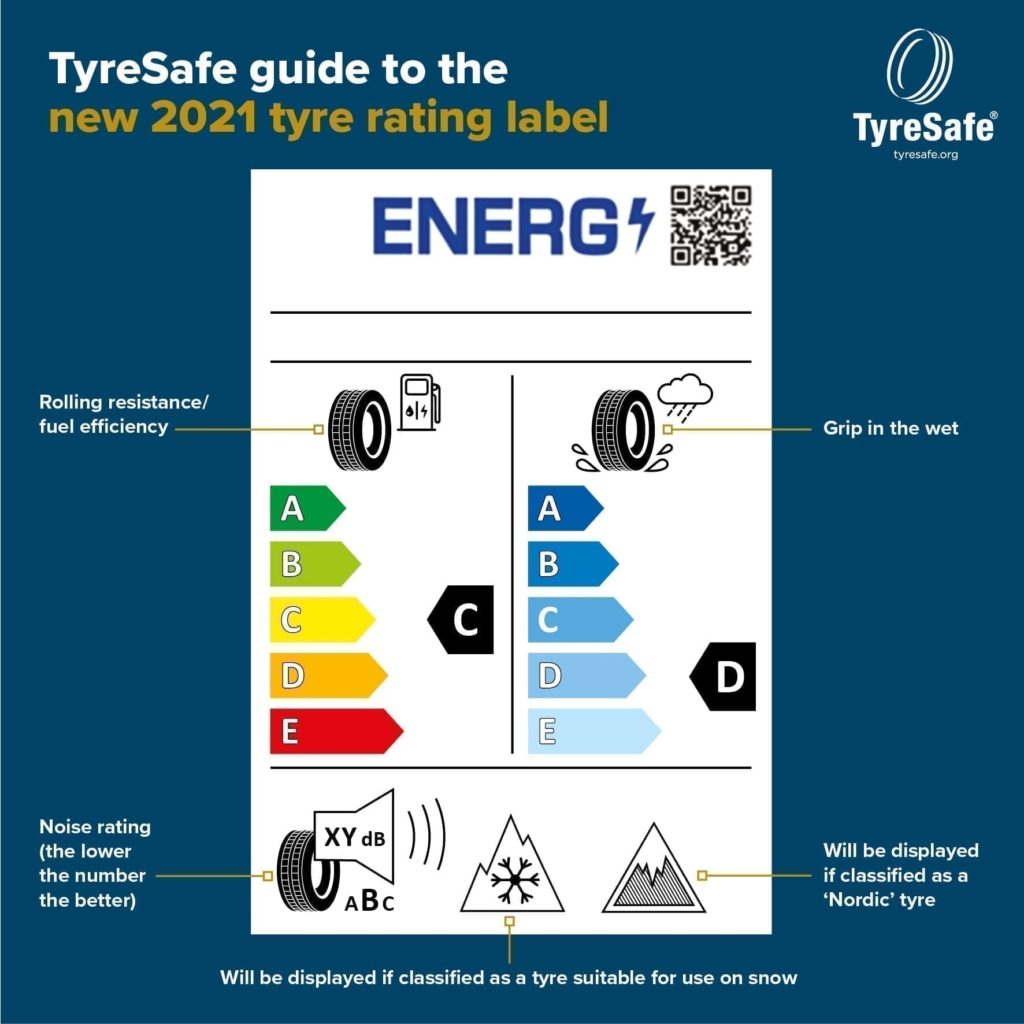In Part One of this post, we looked at the reasons behind the new changes in UK tyre labelling. In case you really don’t have five minutes to read it, we can sum up the reasons like this: at the moment, tyre labelling is too confusing and the information isn’t always available to customers.
In this part, we’ll look at exactly what those changes are.
1. A -E categories replace A – G
On the current labelling system, wet grip and rolling resistance are divided into seven categories, ranging fom A to G.
As we noted in Part One, that can be confusing for customers used to the familiar A – E scale seen on electrical goods.
The new system therefore uses an A – E scale for these two crucial categories.
2. Tyre noise levels get a rating
As things stand, tyre labels show an external noise rating in decibels.
However, that’s not particularly helpful for most consumers. For example, what does a 72 dB tyre actually sound like? Noisy? Quiet? Currently, the only way for most of us to know is to compare it to lots of other tyres.
The new labels therefore retain the number, but add a rating of A -C to give some idea where the tyre is in the scheme of things.
3. New symbols for snow and ice performance
The new labels include two optional symbols for tyres that are designed for good performance in snow and ice.
Winter tyres get a snowflake symbol, indicating good performance on snow. Nordic Winter tyres, which cope better with icy conditions, get an additional mountain symbol.
4. There’s a QR code
Many of us are used to using QR codes for everything from cafe menus to Track and Trace.
The new labels therefore add a QR code to the physical tyre label. Each type identifier links to the EU product database, the European Product Registry for Energy Labelling (EPREL).
5. The label information will be made available digitally
A key part of the new system is making tyre information more easily available to customers.
In order to do this, first the information has to be easily available to retailers. The new labelling system is designed to ensure that retailers get the tyre label information digitally. They will then be required to pass the information onto customers — via their website, for example.
TyreSafe Summary
Those helpful people at Tyre Safe have produced a graphic showing the new-style label – see below. It’s part of their useful article on the subject.

Graphic courtesy of Tyre Safe.
It’s a bit of a job
Of course, putting all this into practice is easier said than done. For example, there’s the small business of manufacturers uploading the information on 120,000 different tyre products to the EU database. Then there are the changes for retailers…
But it’s all in a good cause and we will soon adapt to the new system. Rest assured that regardless of the system in place, BK Tyres is committed to providing its customers in Oxfordshire, Berkshire and Buckinghamshire all the information and advice they need — together with our amazing customer service.
The BK Tyres blog carries news, views and information on tyres and related subjects. BK Tyres supplies and fits tyres throughout South Oxfordshire, including the communities of Abingdon, Didcot and Henley on Thames. As an independent, family run mobile provider, we provide exceptional levels of service and affordable prices. Contact us today.
